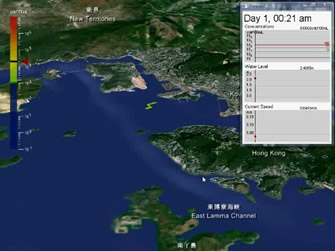Centre for Marine Environmental Research and Innovative Technology
The University of Hong Kong Pokfulam Road, Hong Kong
T +852 2299 0600
F +852 2559 9114
aoemerit@hku.hk
www.hku.hk/merit
Risk Assessment
Predicting the consequences of pollution
The aim of MERIT's research into risk assessment methods is to better predict the effects of a range of pollutants and toxic chemicals on the marine and coastal environment.
Carrying capacity models
Recognising that contaminants may never be eradicated entirely, MERIT has set out to predict how far certain water bodies absorb, accommodate and maintain levels of contaminants, yet can still provide services for our desired uses. Answering the needs of environmental managers, who face the challenge of worsening marine pollution, our simulation model can quantify the carry capacity of different marine ecosystems, displaying the extent to which contamination can occur without generating adverse, long term or irreversible impacts.
Biokinetic models
Achieving a complete picture of the effects of pollutants on the marine environment depends on mapping how toxic chemicals travel along the food chain. To meet this challenge, MERIT has developed biokinetic models, which can predict the pathways, movements and concentrations of a range of toxic chemicals across different compartments within ecosystems. These models allow us to assess the knock-on effects of pollution throughout the marine environment more accurately.
Risk assessment models
Based on the results provided by the models above and other research, MERIT is working to produce full-scale risk assessment models. Their purpose will be to determine and predict the overall impact on public health and ecosystem health of certain types of pollutants affecting various water bodies. Ultimately, our prediction and modelling of the effects of a range of toxic chemicals will allow us to weigh up different management options, and ultimately to facilitate sound, better management and protection.
